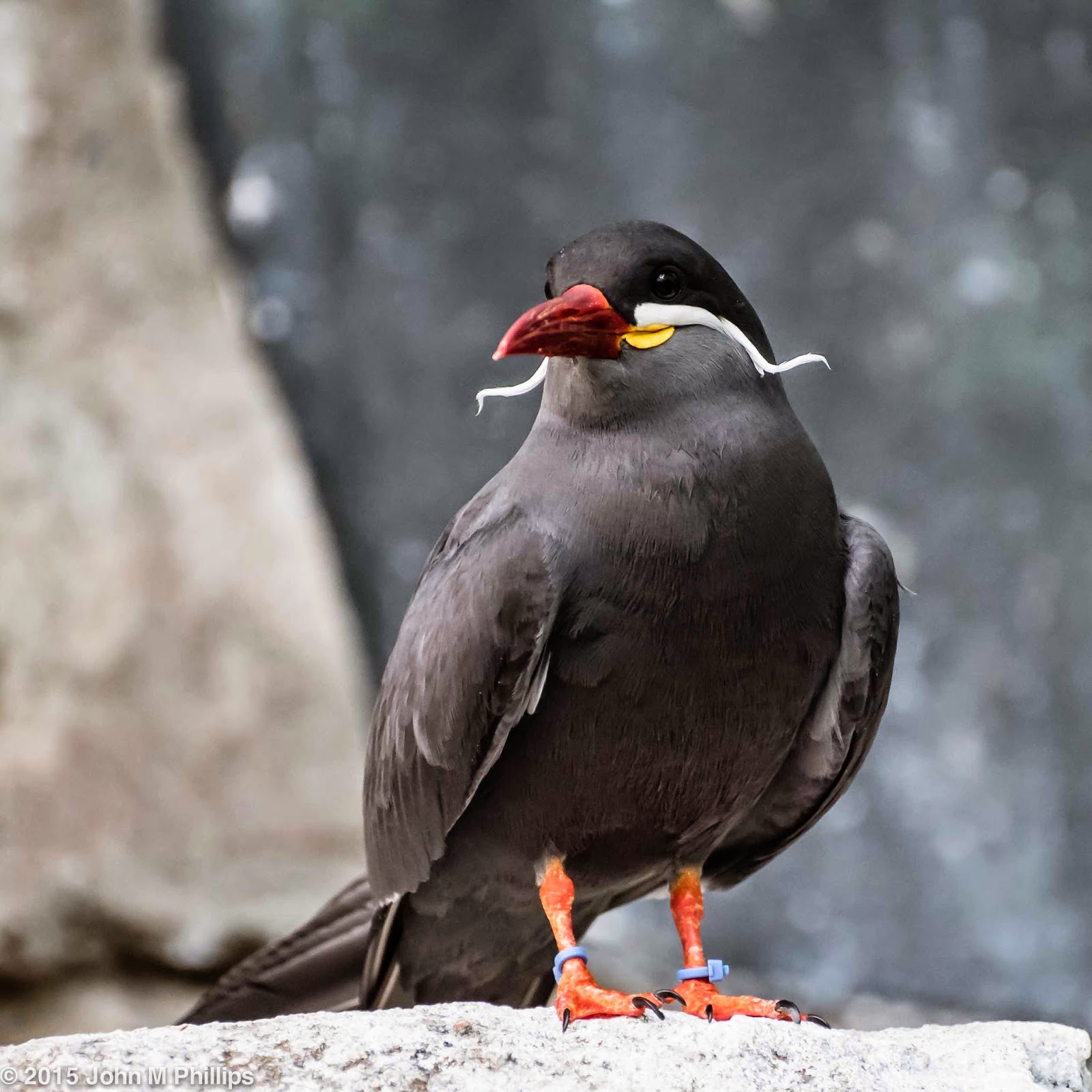I hadn't been to the Milwaukee County Zoo for a couple of years, but Saturday, March 7, was the final free admission day until the fall, and the weather had suddenly turned from unseasonably cold to sunny and, believe it or not, unseasonably warm. So I grabbed my camera and spent a couple of hours trying to take reasonable photos of the animals.
Not as easy as it looks. First, many of the animals are in almost constant motion, making it nearly impossible to get a nice composition. Also many of the animals are indoors at this time of the year, and the interior lighting is relatively dim. Moreover, the white balance of the light can vary from venue to venue. In addition, the animals may either be small or far away. Finally, many of the animals are enclosed either in glass, which is often dirty or reflecting light glare, or behind fencing, which tends to confuse my camera's autofocusing system. Excuses, excuses. Actually, at least I had fun trying.
There are things I can do to compensate for some of these problems. First, I decided to use my 70-300 mm telephoto zoom, giving me more "reach" for those animals that are either smallish or farther away. Second, I generally kept my lens aperture wide open. This allowed for faster shutter speeds at a given ISO rating. In addition, my new camera includes a setting that keeps the aperture constant but automatically adjusts the ISO--within limits that I set--to keep the shutter speed as fast as possible. That helped a lot for interior shots, since all of the shots were handheld. Finally, I kept the white balance on "Auto," knowing that I could always adjust color in post processing.
Given all that, let's just say that I was more successful with some of the animals than with others.
Surprisingly low on the success list were reptiles . . . for a couple of reasons. First, the zoo was mobbed with patrons who were there for many of the same reasons as me. Second (and this caught me by surprise), my telephoto has a minimum focal length, which means that I can't get closer than about five feet and still keep the subject in focus. Because of that, I sometimes had to back up when the animal was close to the front of the glass cage, allowing the younger patrons to get between me and the intended subject animal. Here is the only surviving shot of a reptile from my excursion.
And, frankly, I only kept this shot because the lizard was opening its mouth, I presume in anger. Ugly, really.
I did capture some of the larger animals, including this leopard, who was looking quite relaxed.
Even more relaxed--and regal--was this male lion.
The resolution on these shots was really quite good, although the ISO was quite high--2500 to 3200. But it's better to get a shot that's a little noisy than one that shows camera blur.
The African elephants were outdoors in the fine weather. However, I simply didn't have the patience to wait for them to be still, and the only decent shot I got was the following.
I know, I chose to clip most of the elephant out of the image, but I was really going for skin texture. This was shot at a relatively low ISO of 220.
Birds were something of a positive surprise. They were plentiful and not overly active, allowing me time to compose some of my shots, including the ones below.
The focus on the vulture on the left was quite good. I was hoping to get both birds in focus, but the one on the right was hanging back, and with the lens wide open, my depth of field was quite shallow. Even so, I kind of like the shot.
The problem with the above shot was that the bird's beak was posed in front of the its body and got a little lost in the bright orange of the bird's plumage.
I did like the handlebar "mustache" of the following bird. (Note the ankle bracelets it is sporting.)
The best avian shots belong to the following couple of toucans (at least I think they are toucans).
But the stars of the show on Saturday had to be the mandrills. I had attempted to get shots of the gorillas and the orangutans, but they simply weren't cooperating, so I stuck with the mandrills. They seemed content to pose facing the patrons (and my camera), and the crowds were manageable.
I only kept one of the shots of what I believe was the male. Thoughtful fellow.
The female was perhaps more photogenic.
Looking directly at me. And here's another shot where she seems to be acting puzzled/worried.
Or in the following shot, signaling the pitcher for a change of pace.
I have to say that my (new) camera performed beautifully, allowing me to get better shots than my lack of patience should have permitted.
John













No comments:
Post a Comment
Note: Only a member of this blog may post a comment.